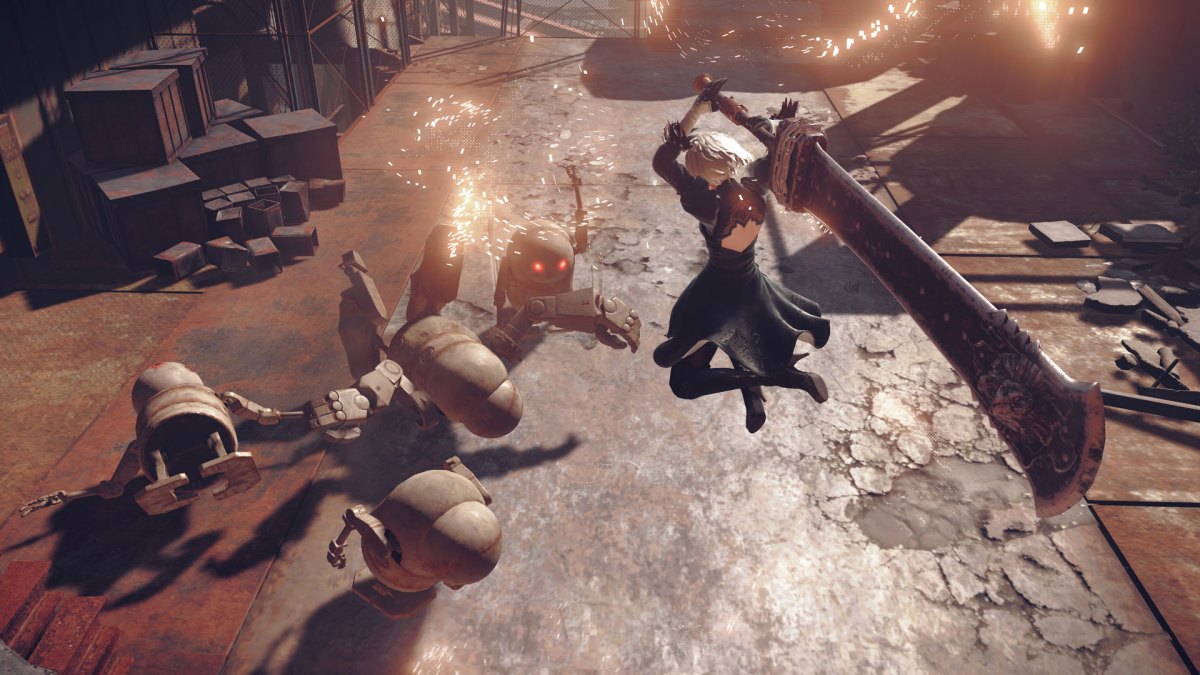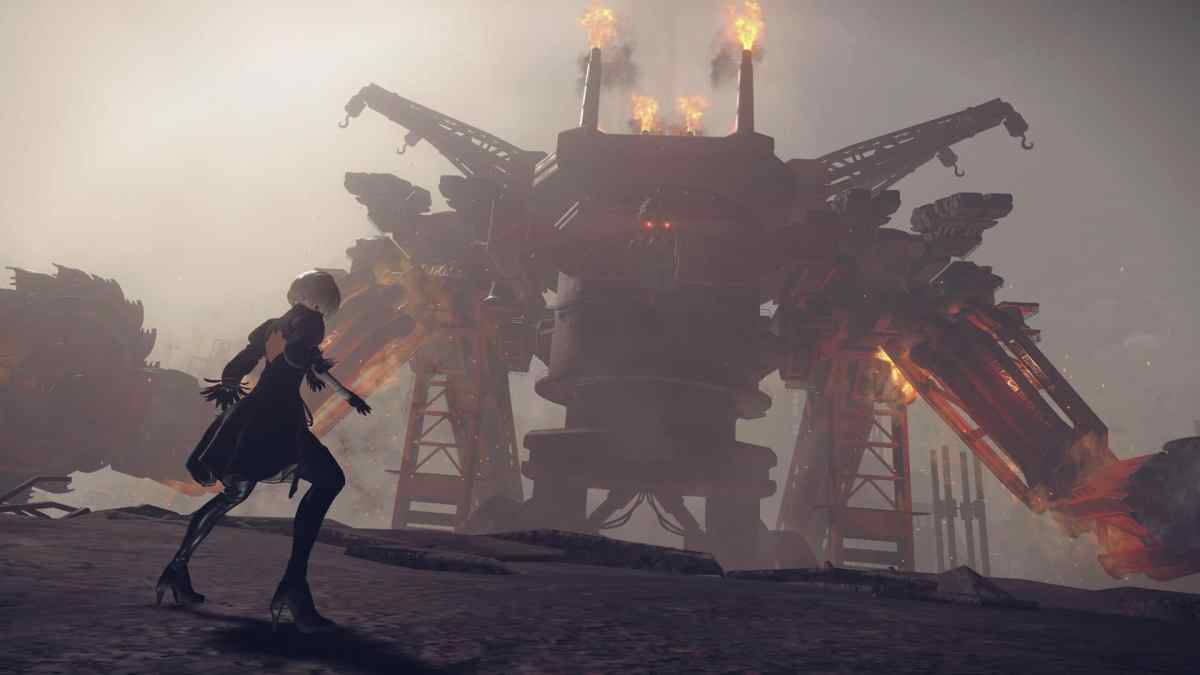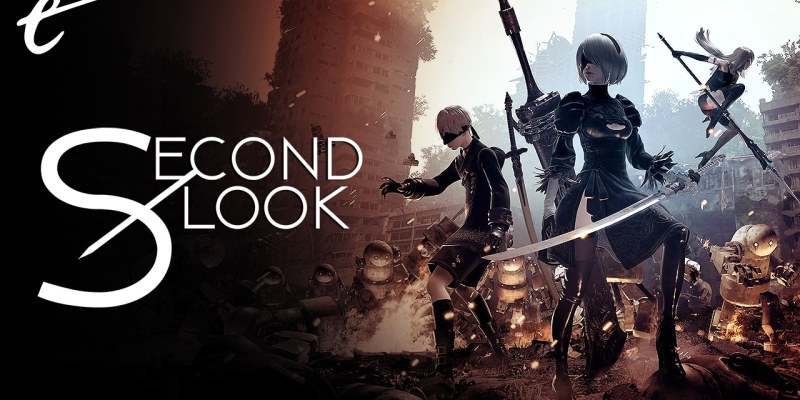Previously on Second Look, we touched upon the underrated gem Nier. Since its pseudo-remake Nier: Replicant launched last year, it spurred me to finally play the sequel, Nier: Automata. The main reason I’d hesitated to play so long is because Automata and Replicant were developed by PlatinumGames, of Bayonetta fame. It’s a talented studio, but not one known for highly nuanced storytelling.
While designer Yoko Taro remains a key figure in the series, there was inevitably going to be a shift. Putting Nier under a studio most famous for over-the-top brawlers certainly got more fans on board, but I wanted to explore why. Because it’s not as simple as using the branding and creating a wholly different experience.
Despite Platinum’s penchant for doing whatever it desires with IP, its take on Nier follows relatively the same underlying design. It requires multiple playthroughs to unlock new story elements that unveil a far greater tapestry at play. There are likewise themes of bigotry, wrongful assumptions, nihilism, and self-sacrifice all over the place.
So, what makes Nier: Automata different from Nier? Well, it’s that it’s about as blunt as a hammer to the knee and twice as loud as the scream that follows.
To be clear, Nier: Automata is far from a bad game. It’s just nowhere near as restrained as its predecessor. While Nier also opened with a prologue section that relied more on action, it was contained to a single building, for about 10 minutes. By contrast, Automata has you spend a full hour in one giant, escalating set piece that keeps heightening the drama.

There’s no pause as the game switches across multiple styles of bullet hell and brawler. PlatinumGames takes elements that might’ve been sequestered to a single section of Nier and throws them all in a blender at the start, leaving you breathless. It tends to be a bit jarring as a result.
Though the sequence is incredibly linear, it’s less deliberate and focused than what came before, at times overcomplicating the presentation just to throw more novelty at the player. It puts everything on the table before you’ve had a chance to get to grips with half of it, reeling you in with the action while you’re still trying to make sense of everything. It’s a very James Wan action movie technique – exposition, explosion, and repeat.
This is significant because it’s the exact opposite of Nier’s opening hours. Your first impression beyond the opening prologue in Nier is far more Zelda-like, as you help around your village and take care of your young charge Yonah. The Zelda inspiration actually still lingers in Nier: Automata, but it’s consciously downplayed at first. You eventually gain your own house like in the first game, but it comes hours later.
The opening of Nier: Automata rushes along so quickly that the story has to stop and reintroduce the leads and their world again after the boss’s defeat. However, this isn’t necessarily a bad thing. It’s established that the protagonist androids are functionally immortal so long as they can transfer their black boxes back to their outpost on the moon. Said androids are repressed from expressing emotion and aren’t always restored with all their memories. The disposability of these “Yorha” units and the torment of warfare they endure is straight up the sort of thing Yoko Taro loves. It’s a different angle of attack for a more modern story.

Yet just as the gameplay presentation is amplified, Nier: Automata also amplifies the presentation of these themes. For example, the worldly ruminations of quest givers are so heavy-handed that it can feel a bit condescending. There is a clear assumption in the design that the problem of the original Nier was it was somehow too reserved, but the pivot in the opposite direction is a bit too overt for Automata’s start.
Some of the changes are effective though. There’s certainly more mechanical sophistication, to the point that Easy Mode has the ability for players to automate whatever functions they don’t want to micromanage. Combat is distinctly more electric, which is fun, even though the brutal deliberateness of Nier’s slower combat highlighted how violence shouldn’t be a satisfying end to a means.
It’s not until you reach the fairgrounds that Nier: Automata unclenches and embraces more of what made the original game so unique. The novelty of building the mechanics and framing around what the story is trying to tell, rather than telling the story hastily amid frantic gameplay. The rest of the game increasingly finds a better pacing, but it’s fascinating how many ways early on that the game tries to sell players on what in some ways was a soft reboot.
Given its immense praise and strong fandom, Automata’s louder opening clearly pulled more players in than Nier. Whether it’s as congruent to the overall aims of the series is something I’m less certain of. Automata does have the beating heart and worthwhile existential questions that made Nier such a remarkable game, but it really tries to frontload spectacle to ensure player engagement before it allows itself to get into its more poignant ideas.
While this approach might not have wowed me, I’m glad it paid off. It’s a tricky line to walk, appealing to the masses while retaining a distinct personality. I hope that Nier continues to maintain that relative balance, should Yoko Taro continue the epic with another surprise sequel.
